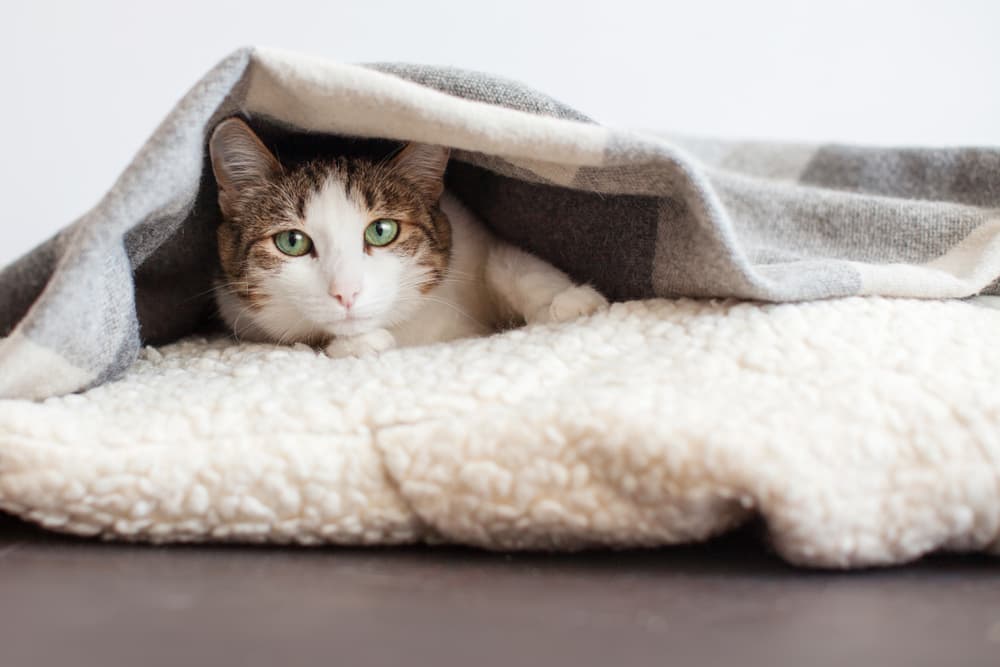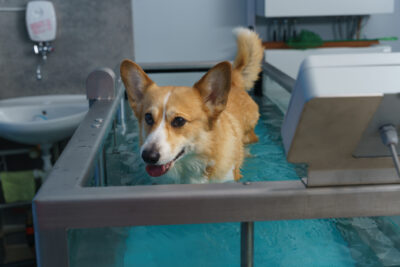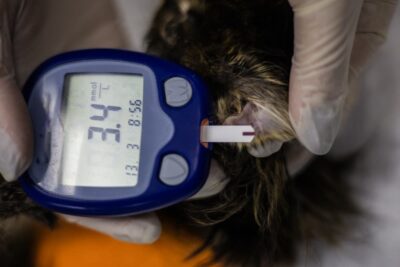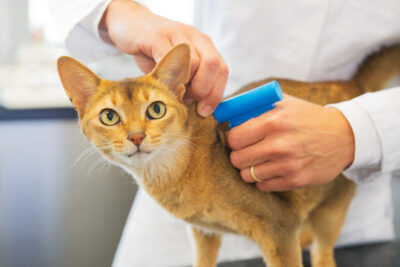How to Keep Cats Warm in Winter

Over the winter months, cats seem to gravitate towards warmth. They love curling up next to radiators, heaters, and fireplaces. They burrow into the folds of the coziest, most snuggly blankets.
But when temperatures drop, cats – especially those who roam outdoors – are at risk of dangers such as hypothermia and frostbite. We asked veterinarians and cat experts for tips on how to keep cats warm in winter. Here’s what they had to say.
Do Cats Get Cold?
Just like humans, cats can feel cold when the mercury drops, especially when they spend time outdoors. Yet, cats handle low temperatures pretty well, says Dr. Kristopher Sharpe, a veterinary staff internist and the medical director at BluePearl Veterinary Partners in Grand Rapids, Michigan.
“Most cats deal with cold, cooler temperatures quite well, particularly if they have time to acclimate to what they’re in and their surroundings,” says Sharpe. “They can get thicker fur and longer fur during the colder months. They’re pretty good about being active as well to keep their metabolism and body heat up.”
He added that cats are generally more tolerable to low temperatures inside a house than people are. “As long as they have blankets available they should be fine,” he says.
While Dr. Sharpe does not recommend a particular temperature at which you should keep your house, the American Veterinary Medical Association suggests keeping rooms above 50 degrees Fahrenheit (10 degrees Celsius), and below 80 degrees Fahrenheit (26.6 degrees Celsius), for both dogs and cats.
What can be worrisome is when a cat is suddenly exposed to an environment they aren’t used to, says Dr. Sharpe. For instance, a cat accustomed to a very warm environment might not cope well if abruptly exposed to a very cold environment. The same is true in reverse.
“It’s the change in temperature that’s probably the biggest problem,” Sharpe says.
Pet parents should also be aware of exposing cats to extremely cold outdoor temperatures for long periods of time, which can lead to hypothermia and frostbite.
Senior cats, kittens, cats with underlying diseases, and hairless cat breeds, including Sphynx and Lykoi cats, tend to be more sensitive to cooler temperatures and temperature variances.
How to Keep Cats Warm: Tips and Recommendations
Cats might be able to tolerate a range of temperatures, but let’s face it — most cats love being warm and snuggly. Why is that? Jane Ehrlich, a professional cat behavorist based in Arizona, says it’s likely to do with the fact that domestic cats originated from wildcat species that lived in hot, arid parts of the world.
“Cats were, after all, desert animals — despite the full-furred breeds,” says Ehrlich.
Sharpe says that while cats can tolerate a range of temperatures, they “prefer the option to be in warmer areas.”
How to Keep Indoor Cats Warm in Winter

Give your cat plenty of space. Dr. Sharpe suggests making sure your cat has a good amount of space so he or she can move around and self-regulate their body heat. Cats will often stay active as a way to keep their metabolism and body heat up, and they need space to play and roam.
Break out the blankets and cozy bedding. Dr. Sharpe recommends furnishing your home with beds and blankets for your cat to cuddle in. You can also try a heated cat bed, which can provide extra warmth during cooler months.
Take extra precautions when going outdoors. When taking an indoor cat outside in the cold — say, on a trip to the vet — Dr. Sharpe says you can help keep your cat warm by adding an extra blanket or two to their carrier during transport. You can also look for cat carriers that provide extra warmth and comfort.
How to Keep Outdoor Cats Warm in Winter

The most effective way to keep a cat warm in the winter is to keep them indoors. But for some cats, that’s easier says than done, especially if a cat is feral. So how can pet parents and cat lovers keep outdoor cats warm and safe in the winter?
Provide access to enclosed spaces. The most important thing is giving an outdoor cat “access to a place where they can get warmer, like a garage,” says Sharpe. “You can also buy little igloos or enclosures where they can get out of the elements.”
Use heated blankets and beds. Heated blankets and beds are very useful to outdoor cats, says Sharpe. However, he stresses the importance of making sure there’s a blanket between the cat and heating element for safety reasons, as well as checking cords regularly for signs of wear that could pose an electrocution risk.
Make DIY cat shelters. Alley Cat Allies, an advocacy group working to protect feral and stray cats and kittens, suggests making winter cat shelters out of plastic tubs filled with straw. Not only will these DIY-cat shelters insulate cats in cold weather, they can save lives.
Protect your cat’s food and water from the elements, too. While keeping your outdoor cat safe from winter’s chill is your top priority, protecting their food and water is a close second. When temperatures drop, it doesn’t take long for your cat’s food and water bowls to freeze over. To guard against hunger and thirst, check on your cat’s food and water at least twice a day to make sure it’s not frozen. If possible, place your cat’s water bowl in an area that’s sheltered from wind and rain. And you may want to switch to a dry kibble, which is less likely to freeze in wintry weather.
Dangers of Cold Weather for Cats

While cats can tolerate a range of temperatures, there are situations in which cold weather can become dangerous. If a cat is exposed to cold weather for too long and does not have a warm, dry place to retreat to, they can get hypothermia or frostbite.
Hypothermia in cats is a condition characterized by unusually low body temperatures. Dr. Sharpe says that cats suffering from hypothermia would be “acting very sick.”
“They may be very quiet, they may be lethargic, they may not be very responsive,” he says. “They could be shaking, although their body temperature gets colder … they won’t even shiver or shake anymore.”
If you think your cat has hypothermia, you should wrap them up in a towel or blanket. However, don’t place them directly on a heating element because rewarming needs to be done gradually. Instead, seek veterinary care as quickly as possible.
Another cold weather risk for cats is frostbite, a condition in which the extreme cold damages your cat’s body tissues. According to Dr. Sharpe, frostbite in cats is rare, but it can happen when they’re exposed to extreme cold or have poor blood circulation.
“We see it on the paw pads and ear tips,” he says. “How long it would take to develop frostbite is hard to say because it would be dependent on the severity of the cold temperature and direct exposure.”
But you can greatly reduce cats’ risk of getting these conditions by keeping them in an indoor environment replete with blankets and beds. Or, at the very least, providing a refuge for outdoor cats so they can warm up.









